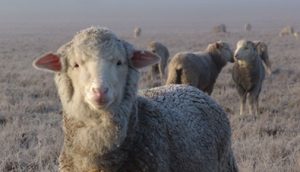Read the latest information on
Foot-and-mouth disease
 Are you losing money through hidden health conditions in your sheep leading to meat processing waste?
Are you losing money through hidden health conditions in your sheep leading to meat processing waste?
The National Sheep Health Monitoring Project (NSHMP) can help you to understand which health conditions might be causing your sheep to be less productive, especially when the signs can’t be seen on-farm.
“The NSHMP was set up to monitor lines of sheep in abattoirs for animal health conditions that reduce farm profit through productivity losses or increase meat processing wastage due to carcass and offal trimming or condemnations.” said Dr Rob Barwell, AHA’s Senior Manager Biosecurity.
The 19 conditions currently monitored can impact the productivity of your flock, Dr Barwell explained, even if it isn’t always plain to see signs of them on-farm.
“Depending on what you’re dealing with, these diseases may have an impact on your flock’s production, either directly or by making them more susceptible to other, more serious conditions.
“However, they may hit hard during processing, causing parts of the carcass to be trimmed, or in some cases condemned entirely, and various affected organs to be discarded, all costing you money.”
The NSHMP can help producers to manage many of these conditions, reduce their impact and ultimately save money. Enabled by the national traceability system, participating abattoirs provide information to the program, which is then made available to the producer.
“Once you understand the rates of disease in your flock, you can begin to put a plan in place to bring those rates down,” Dr Barwell explained.
“Any reduction in how many carcasses are affected and how severely they’re trimmed is going to make a difference.”
Producers are also able to request testing for ovine Johne’s disease (JD) through the participating abattoirs, supporting their claim of high assurance or allowing them to see whether their JD vaccination program is effective.
Find out more about the NSHMP via Animal Health Australia’s website, or access your data through Meat & Livestock Australia’s Livestock Data Link portal.
You can also find out more about health and biosecurity for your sheep on the Farm Biosecurity website.